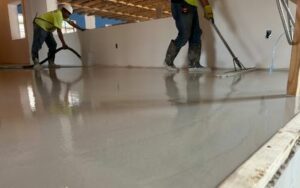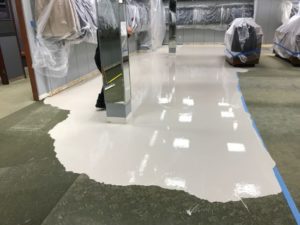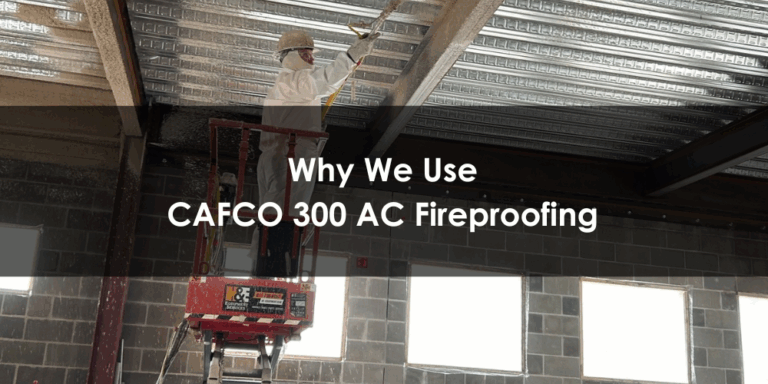Gypsum Underlayment (also known as gypsum floor, gyp floor, gypsum concrete or gyp concrete) is a building material composed of a mixture of gypsum plaster, portland concrete, and sand. The product is normally batched onsite and pumped into place.
Here are the top 5 applications for gypsum underlayment in commercial construction:
Application 1 – Fire rating
For commercial buildings that require a fire-resistance rating, gypsum underlayment is oftentimes the best and most cost-effective solution. The product acts as a passive fire protection system and is an essential part of a 1-hour floor/ceiling fire-rated assembly.
Application 2 – Sound reduction
No one wants to hear every move that people upstairs are making. It is for this reason that all multifamily residential buildings are required to meet a minimum STC/IIC sound rating of 50. While there are many more expensive ways to achieve this sound rating, a sound mat with a gypsum underlayment topping remains one of the most cost-effective solutions.
Application 3 – Floor leveling
Either due to settling over time or poor construction, many commercial remodeling projects require floor leveling. When pumped onto uneven floors, gypsum underlayment can be leveled to a predetermined elevation and when cured creates a level floor with a compressive strength similar to that of traditional concrete.
Application 4 – Radiant heating
Modern underfloor heating systems that use fluid flowing in pipes to heat the floor must be encapsulated with a material that will conduct the heat and protect the pipes. Gypsum underlayment is a perfect solution because it can be poured into crevices to stabilize the piping. We encapsulate the radiant heat tubing so that a finished floor can be installed over the radiant tubes.
 Application 5 – Asbestos encapsulation
Application 5 – Asbestos encapsulation
Asbestos is a naturally occurring mineral whose fibers are soft and flexible yet resistant to heat, electricity and corrosion. The problem is that when someone inhales or ingests asbestos dust, the mineral fibers can become forever trapped in their body. The trapped asbestos fibers can cause inflammation, scarring, cancer, and eventually genetic damage to the body’s cells. Because of this, the use of asbestos in the construction industry was effectively banned in 1989.
Gypsum underlayment can be used to encapsulate asbestos to prevent the fibers from being released into the air. This is an alternative to asbestos abatement.
Contact an expert at Nettles to find out how Nettles Construction Solutions can offer you the best services in gypsum underlayment treatment. Our employees are experts in managing the equipment, batching on site, supervising the mixed designs, working with different materials, pumping and placing the material correctly and precisely, and leaving the worksite in pristine condition.




